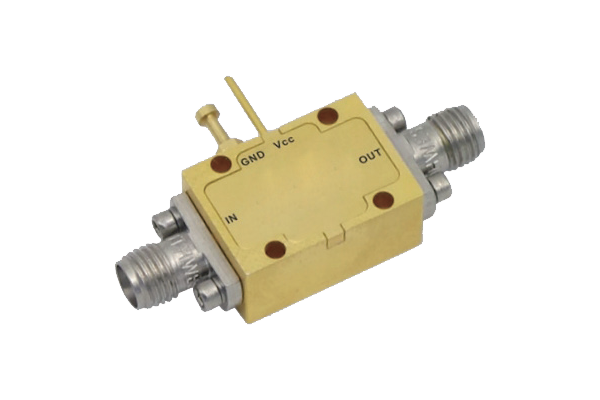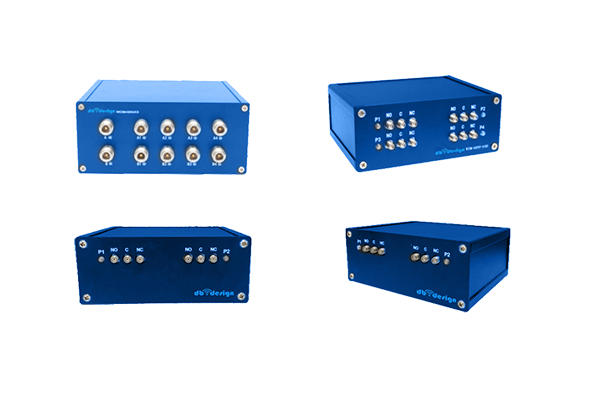
Pin diodes now serve as significant elements in high-bandwidth applications owing to their fundamental material and electrical qualities Their fast toggling behavior plus small capacitance and reduced insertion loss renders them apt for use in switch modulator and attenuator circuits. The underlying principle of PIN diode switching involves controlling charge flow through the junction by biasing the device. Voltage bias impacts the depletion layer width across the junction and consequently the conduction. Adjusting the bias enables PIN diodes to be switched for high-frequency operation while minimizing distortion
In systems that require precise timing and control PIN diodes are commonly integrated into sophisticated circuit topologies They can serve in RF filter networks to selectively transmit or block specific frequency ranges. Their strong signal handling properties make them practical for amplifier power divider and signal generation uses. Reduced size and improved efficiency of PIN diodes have enhanced their applicability in wireless and radar engineering
Designing Coaxial Switches for Optimal Performance
Engineering coaxial switches requires meticulous handling of diverse design variables Coaxial switch effectiveness depends on the switch kind frequency of operation and insertion loss metrics. Minimizing insertion loss and enhancing isolation are primary goals for coaxial switch engineering
Analyzing performance involves measuring important parameters like return loss insertion loss and port isolation. Performance figures are derived from simulation modeling theoretical analysis and empirical testing. Detailed and accurate analysis underpins reliable functioning of coaxial switches in various systems
- Analytical methods simulation packages and experimental testing are standard approaches to coaxial switch analysis
- Environmental temperature impedance mismatches and production tolerances can significantly influence switch characteristics
- New advances trends and innovations in coaxial switch engineering aim to enhance performance metrics while cutting size and power consumption
Strategies to Optimize LNA Performance
Achieving high LNA performance efficiency and gain is critical for exceptional signal fidelity in many use cases It requires selecting suitable transistors setting optimal bias conditions and choosing the right topology. Effective LNA designs minimize internal noise and maximize clean signal gain with little distortion. Modeling simulation and analysis tools play a central role in evaluating the impact of design decisions on noise. Reducing the Noise Figure remains the design target to ensure strong signal retention with minimal added noise
- Selecting low-noise active devices is central to achieving low overall noise
- Implementing suitable and optimal bias conditions helps minimize transistor noise
- The chosen circuit topology plays a major role in determining noise behavior
Tactics like impedance matching noise mitigation and feedback regulation advance LNA performance
PIN Diode Based RF Switching and Routing

PIN diode switch networks offer flexible and efficient means to route RF energy in many systems These devices switch rapidly enabling active dynamic routing of RF paths. The low insertion loss and high isolation of PIN diodes help maintain signal integrity during switching. Common uses encompass antenna selection duplexers and phased array implementations
The switching behavior is governed by voltage driven modulation of the diode’s resistance. When off or deactivated the diode exhibits high resistance effectively blocking RF energy. When a positive control voltage is applied the diode resistance decreases reduces or falls allowing RF signals to pass
- Additionally PIN diode switches present fast switching low energy use and compact dimensions
Multiple configurable architectures and design schemes of PIN diode switches facilitate complex routing operations. Combining multiple switch elements makes possible dynamic switching matrices enabling flexible routing
Coaxial Microwave Switch Testing and Evaluation

The evaluation assessment and testing of coaxial microwave switches is essential to confirm optimal operation in complex electronic systems. Several influencing factors such as insertion reflection transmission loss isolation switching speed and frequency range determine performance. Complete assessment involves quantifying parameters over diverse operational and environmental test conditions
- Moreover additionally furthermore the evaluation ought to include reliability robustness durability and environmental tolerance considerations
- Finally the result of robust evaluation gives key valuable essential data for choosing designing and optimizing switches to meet specific requirements
Review of Techniques to Reduce Noise in Low Noise Amplifiers
LNAs serve essential roles in wireless RF systems by amplifying weak signals and curbing noise. The review supplies a broad examination analysis and overview of methods to diminish noise in LNAs. We examine explore and discuss primary noise origins such as thermal shot and flicker noise. We also review noise matching feedback implementations and biasing tactics aimed at reducing noise. It highlights recent progress including advanced semiconductor materials and novel circuit topologies that cut noise figure. Offering a thorough understanding of noise mitigation principles and methods the review helps designers and engineers build high performance RF systems
Rapid Switching System Uses for PIN Diodes

They possess unique remarkable and exceptional qualities beneficial for high speed switching Small capacitance together with low resistance enables rapid switching to satisfy precise timing needs. PIN diodes’ adaptive linear voltage response permits precise amplitude modulation and switching. Such versatility flexibility and adaptability renders them appropriate suitable and applicable for diverse high speed scenarios They are applied in optical communications microwave systems and signal processing equipment and devices
IC Based Coaxial Switch and Circuit Switching Technologies
IC based coaxial switch technology advances signal routing processing and handling in electronic systems circuits and devices. IC coaxial switch solutions orchestrate control management and directed signal flow through coaxial media while keeping high frequency performance and reduced latency. Miniaturization inherent in IC technology yields compact efficient reliable and robust designs suited for dense interfacing integration and connectivity requirements
- Through careful meticulous and rigorous implementation of these approaches engineers can achieve LNAs with exceptional noise performance supporting sensitive reliable systems By carefully meticulously and rigorously low-noise amplifier applying these approaches designers can realize LNAs with outstanding noise performance enabling sensitive reliable electronic systems With careful meticulous and rigorous deployment of these approaches developers can accomplish LNAs with outstanding noise performance enabling trustworthy sensitive electronics By rigorously meticulously and carefully implementing these techniques practitioners can achieve LNAs with remarkable noise performance for sensitive reliable electronics
- Applications range across telecommunications data communications and wireless networking
- Integrated coaxial switch solutions apply to aerospace defense and industrial automation sectors
- Consumer electronics audio video systems and test and measurement platforms incorporate IC coaxial switches
mmWave LNA Design Considerations and Tradeoffs

LNA design at millimeter wave frequencies faces special challenges due to higher signal attenuation and amplified noise impacts. Parasitic capacitance and inductance play a dominant role at mmWave and necessitate precise layout and component choices. Minimizing input mismatch and maximizing power gain are critical essential and important for LNA operation in mmWave systems. Selecting the right active devices including HEMTs GaAs MESFETs and InP HBTs helps secure low noise figures at mmWave. Additionally the development implementation and optimization of matching networks plays a vital role in efficient power transfer and impedance matching. Careful management of package parasitics is necessary to prevent degradation of mmWave LNA performance. Adopting low loss transmission media and careful ground plane strategies is essential necessary and important to cut reflections and retain bandwidth
PIN Diode RF Characterization and Modeling Techniques
PIN diodes function as crucial components elements and parts across various RF switching applications. Precise accurate and comprehensive characterization of these devices is essential to support design development and optimization of reliable high performance circuits. Included are analyses evaluations and examinations of electrical voltage and current characteristics such as resistance impedance and conductance. Characterization also covers frequency response bandwidth tuning capabilities and switching speed latency or response time
Moreover additionally the crafting of accurate models simulations and representations for PIN diodes is essential crucial and vital for predicting RF behavior. Several diverse modeling approaches exist such as lumped element distributed element and SPICE models. Choosing the right model simulation or representation depends on specific detailed particular application requirements and desired required expected accuracy
High End Approaches for Low Noise Amplifier Design
Developing LNAs involves diligent consideration of circuit topology and components to obtain optimal noise performance. Recent advances in semiconductor tech have unlocked innovative groundbreaking sophisticated LNA design techniques that diminish noise greatly.
Notable techniques include employing utilizing and implementing wideband matching networks incorporating low-noise transistors with high intrinsic gain and optimizing biasing schemes strategies and approaches. Moreover advanced packaging techniques and effective thermal management significantly contribute to reducing external noise sources. With careful meticulous and rigorous execution of these strategies designers can obtain LNAs exhibiting excellent noise performance for sensitive reliable systems
